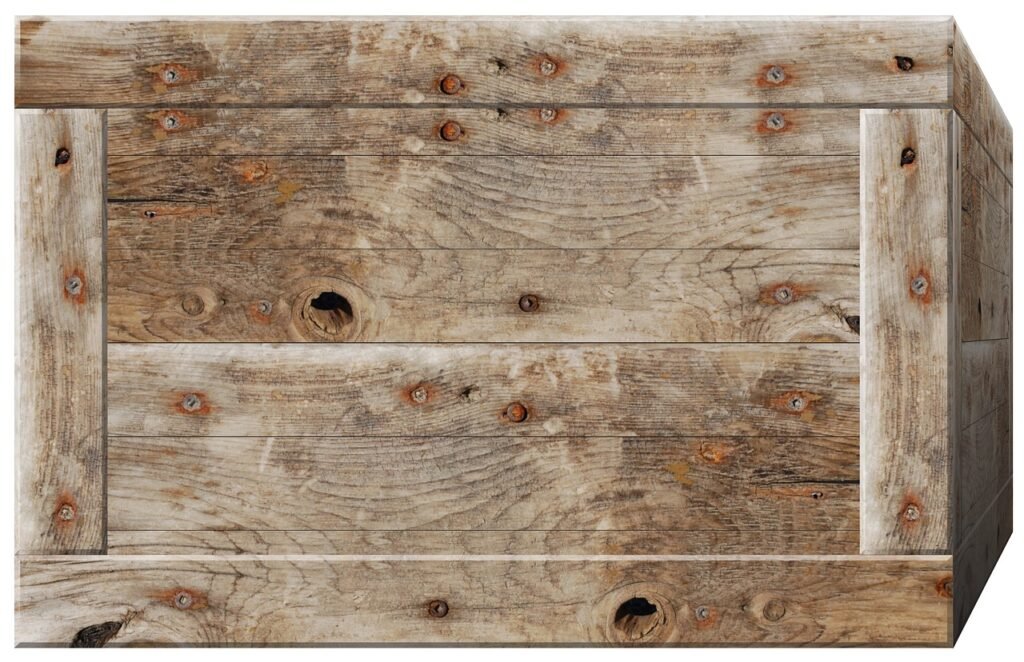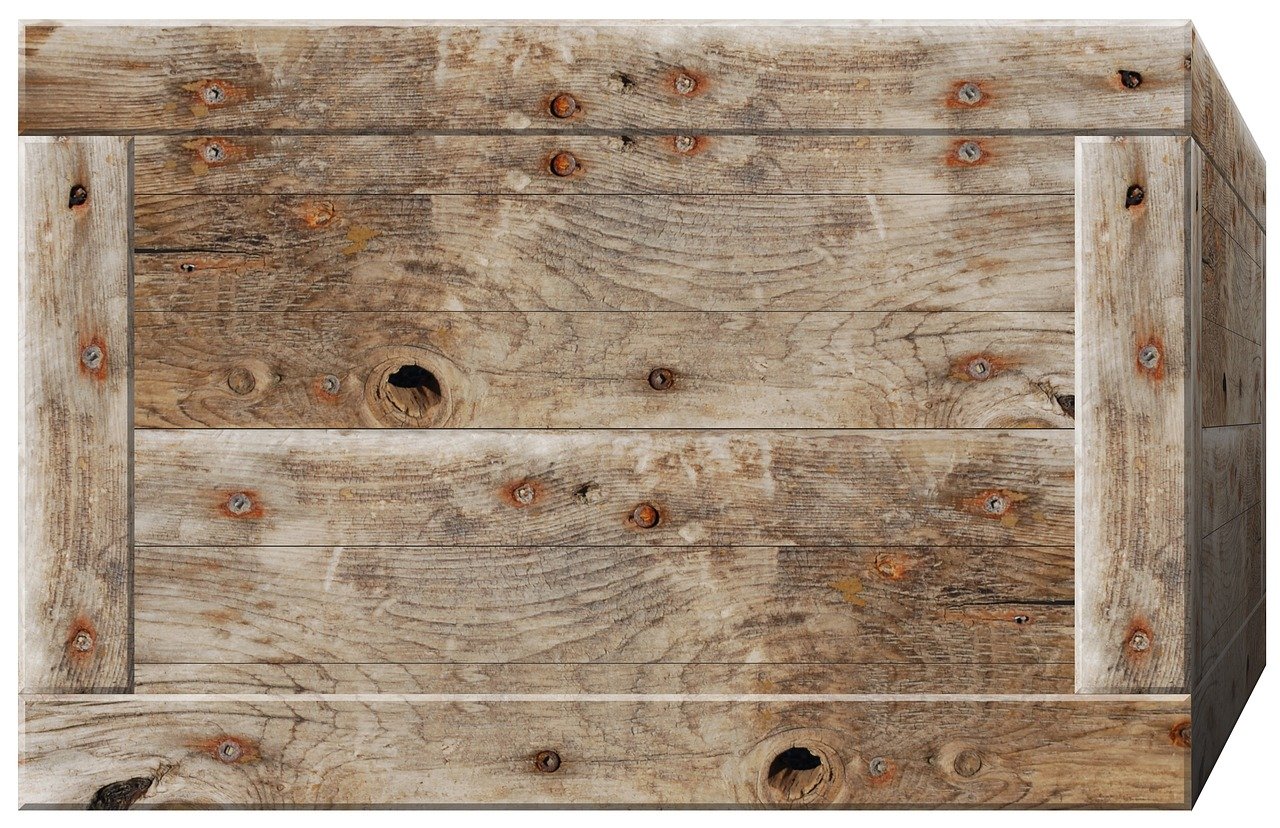Are you a fan of vintage and antique pieces? Do you find joy in uncovering treasures from the past? If so, you’ll be thrilled to read this article. In “Reviving the Past: Antique Crate Restoration Guide,” we will explore the fascinating world of antique crate restoration and share tips on how to bring these forgotten pieces of history back to life. Whether you’re a seasoned collector or just starting out, this guide is packed with valuable information to help you restore and preserve these beautiful artifacts. Get ready to embark on a journey through time and discover the secrets behind reviving the past.
Choosing the Right Crate
When it comes to antique crate restoration, the first step is choosing the right crate to work with. Assessing the condition of the crate is essential in order to determine whether it is worth restoring. Look for signs of wear and tear, such as damaged wood, loose joints, or missing hardware. These can be indicators of a crate that may require extensive restoration. On the other hand, if you come across a crate that only needs minor repairs or cosmetic touch-ups, it could be a great candidate for restoration.
Another factor to consider is whether the crate is truly antique. Identifying antique crates can be a thrilling adventure in itself. Look for clues such as unique designs, vintage branding or labels, or even maker’s marks. Antique crates often have character and charm that makes them valuable and worth restoring. Remember to do your research and consult experts if you’re unsure about the authenticity of the crate.
Lastly, consider the materials used in the construction of the crate. Some antique crates are made of exotic woods or have intricate details that make them special. Choosing a crate that is made of high-quality materials will ensure that your restoration efforts yield the best results. Additionally, working with a crate made of solid wood rather than plywood or particle board will provide more durability and a better end product.
Preparation
Before diving into the actual restoration process, it is important to properly prepare the crate. Cleaning the crate is the first step in this process. Use a soft brush or cloth to gently remove any dust or dirt that may have accumulated over the years. Be careful not to scrub too vigorously as it may damage the wood or remove any original patina that adds to the charm of the crate.
Next, if the crate has old paint or finish, it is important to remove it before proceeding with the restoration. Use a paint stripper or sandpaper to carefully strip off the old paint or finish. Take caution while doing this, as you don’t want to damage the underlying wood or any original markings.
After removing the old paint or finish, inspect the crate for any damaged parts. Cracked or broken pieces may need to be repaired or replaced. Assess the extent of the damage and determine the best course of action. If necessary, use wood glue or other suitable adhesives to fix any broken joints or loose parts. It is crucial to restore the structural integrity of the crate before moving onto the next steps.

This image is property of pixabay.com.
Restoring the Wood
Once the crate is properly prepared, it’s time to restore the wood. Sanding the surface is an important step to create a smooth and even finish. Use different grades of sandpaper, starting with a coarse grit and progressing to a finer one, to remove any imperfections or roughness. Be patient and thorough in this process, as it will determine the overall quality of the final result.
If the wood has cracks or gaps, it is necessary to fill them in before proceeding. Use a suitable wood filler that matches the color and texture of the wood. Apply the filler to the affected areas and smooth it out with a putty knife or a similar tool. Once the filler is dry, sand it down to match the surrounding wood surface.
After sanding and filling, it’s time to apply a wood stain or paint to enhance the beauty of the crate. Choose a stain or paint color that complements the style and aesthetics of the crate. Apply the stain or paint evenly using a brush or sponge, following the manufacturer’s instructions. Allow the product to dry completely before proceeding to the next step.
Replacing Hardware
If the antique crate you’re restoring has missing or damaged hardware, consider replacing it to ensure authenticity and functionality. Start by identifying the original hardware used in the crate. Look for any remaining pieces or marks that indicate the type of hardware originally present. Finding vintage or similar pieces can add to the overall charm and historical accuracy of your restoration project.
Before attaching the new hardware, it is essential to clean and polish it. Use a mild cleanser or metal polish to remove any dirt, rust, or grime from the hardware. Take care not to damage any delicate or intricate details while cleaning. Once the hardware is clean, it’s ready to be attached to the crate.
Replacing missing or damaged hardware is a delicate process. Ensure that the new pieces are a suitable match in terms of style, size, and functionality. Be careful when drilling or attaching the hardware to avoid any damage to the wood or surrounding areas. This step will not only improve the overall appearance of the crate but also make it fully functional and practical.

This image is property of pixabay.com.
Reassembly and Reinforcement
To ensure the structural integrity of the crate, it is important to reassemble and reinforce its joints. Apply a suitable wood glue to the joints and carefully clamp them together. Leave the clamps in place as per the manufacturer’s instructions to allow the glue to dry completely. This step will help secure any loose or weakened joints and make the crate sturdy and durable.
In addition to gluing and clamping, applying reinforcements to the crate can further enhance its stability and strength. Consider using metal brackets or straps to reinforce corners or along vulnerable areas. These reinforcements will add extra support and prolong the life of the crate while maintaining its vintage charm.
Finishing Touches
As you near the end of the restoration process, it’s time to focus on the finishing touches that will truly bring your antique crate back to life. Applying a protective finish is crucial to safeguard the restored wood from future damage or wear. Choose a clear varnish or sealant that is appropriate for the type of wood used in the crate. Apply the finish evenly using a brush or cloth, following the manufacturer’s instructions.
After applying the protective finish, polish the wood to enhance its natural shine and beauty. Use a high-quality wood polish or wax and gently buff the surface of the crate. This will not only make the wood look more vibrant but also provide an extra layer of protection.
To add a touch of uniqueness and personalization, consider adding decorative elements to the crate. This could include vintage labels, stenciled designs, or even hand-painted motifs. These decorative touches will highlight the crate’s history and make it a truly eye-catching piece.

This image is property of pixabay.com.
Caring for Restored Crates
Once your antique crate has been lovingly restored, it’s important to take proper care of it to maintain its beauty and value. Regular cleaning and dusting are essential to prevent dirt and debris from damaging the wood or hardware. Use a soft cloth or brush and gently remove any dust or particles that may have accumulated.
When displaying your restored crate, keep in mind that it should be protected from moisture and direct sunlight. Excessive exposure to moisture can lead to warping or rotting of the wood, while prolonged exposure to sunlight can cause discoloration. Place the crate in a location where it is not exposed to these elements, such as away from windows or in a controlled environment.
Periodic maintenance and inspection are also important to ensure that the restored crate remains in good condition. Regularly check for any signs of wear, loose hardware, or other issues that may require attention. Addressing any potential problems early on will help prevent further damage and maintain the crate’s longevity.
Displaying Antique Crates
Restored antique crates can make beautiful additions to your home decor. When choosing the right display location, consider the overall theme and style of your space. Antique crates can complement a rustic or vintage-inspired aesthetic, but they can also add a unique touch to modern or eclectic environments.
Creating a theme or arrangement around the crates can highlight their historical value and make them stand out. For example, you could use a collection of antique crates to display vintage books or vinyl records. You could also incorporate them into a gallery wall by combining them with framed photos or artwork.
In addition to being decorative, antique crates can also serve as functional storage solutions. Use them to organize and store various items, such as blankets, magazines, or even shoes. By incorporating antique crates into your storage system, you’ll not only add character to your space but also make it more practical and organized.
Preserving the Historical Value
Preserving the historical value of antique crates is important for enthusiasts and collectors alike. Researching and documenting the crate’s history can provide valuable insights into its origins, previous use, and significance. Keep a record of any information you find, such as maker’s marks, branding, or any associated stories or anecdotes.
When restoring antique crates, it is crucial to preserve their original features to the extent possible. Avoid stripping away or altering any unique markings, labels, or aged patina that add to their vintage charm. These original features are part of the crate’s history and contribute to its value.
For complex restoration projects or valuable antiques, seeking professional expertise is highly recommended. Professional restorers have the knowledge, experience, and tools to handle delicate or intricate restoration work. They can provide guidance on the best restoration techniques and help ensure that the crate retains its historical and monetary value.
Conclusion
Restoring antique crates is a rewarding and fulfilling endeavor. By following the steps outlined in this guide, you can bring these pieces of the past back to life and preserve their historical value. Whether you’re a collector, an enthusiast, or simply someone who appreciates the beauty of antique crates, taking the time and care to restore them will ensure that they continue to be cherished for generations to come. So go ahead, embrace the charm of the past, and embark on your own journey of antique crate restoration.
